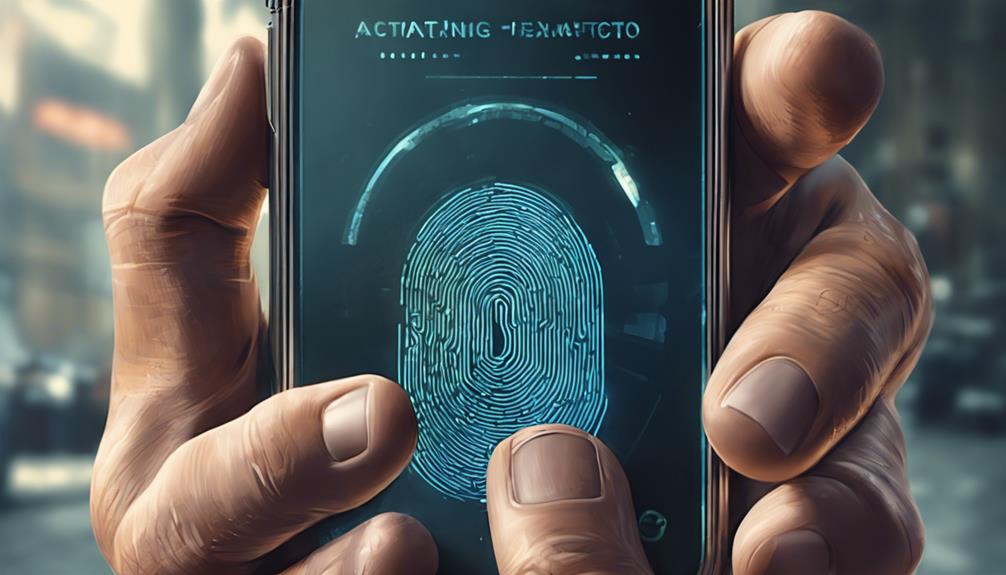Ring cameras, while useful, can face hacking risks if not safeguarded. Weak passwords and outdated software are common vulnerabilities. End-to-end encryption, introduced recently, aims to bolster security. To enhance protection, users should use unique passwords, enable two-factor authentication, and update software regularly. Important passwords and two-factor authentication provide essential layers of defense. Keeping software updated is critical to patch vulnerabilities and reduce hacking risks. Practicing good security habits is essential. Remember, proactive measures are key to safeguarding Ring cameras from potential hackers.
Key Takeaways
- Strong passwords and two-factor authentication enhance Ring camera security.
- Regular software updates patch vulnerabilities and strengthen defenses.
- Utilizing a VPN encrypts network connections for added protection.
- Avoid sharing login details and limit access to prevent unauthorized entry.
- Monitoring cameras for suspicious activity helps address security concerns promptly.
Ring Camera Vulnerabilities and Risks
Ring cameras are susceptible to hacking and privacy breaches due to various vulnerabilities and risks associated with their security measures. Security vulnerabilities, such as weak passwords and unencrypted connections, have led to hacking incidents on Ring cameras. Hackers exploit these weaknesses to access personal information and manipulate footage.
Despite measures like adding end-to-end encryption in September 2022, Ring devices remain at risk if not properly secured. Unpatched software vulnerabilities and weak network security also make Ring cameras vulnerable to hacking.
Implementing proper security measures like unique passwords and two-factor authentication is vital for protecting Ring devices. Regularly updating Ring software, using strong passwords, and deleting old footage are essential practices to prevent hacking incidents.
It is imperative for users to stay vigilant and proactive in securing their Ring cameras to safeguard their privacy and prevent unauthorized access.
Understanding Ring Security Concerns

Ring cameras have faced security breaches due to issues such as weak passwords and unencrypted connections in the past.
To address these concerns, Ring introduced end-to-end encryption in September 2022 to strengthen device security.
It is important for users to be vigilant in implementing security measures like unique passwords and two-factor authentication to mitigate the risk of unauthorized access to their Ring cameras.
Ring Camera Vulnerabilities
Understanding the security concerns surrounding vulnerabilities in Ring cameras is essential for ensuring the safety and privacy of users. Hackers have exploited weaknesses in Ring devices, such as weak passwords and unencrypted connections, leading to unauthorized access and privacy breaches. To illustrate the risks associated with Ring camera vulnerabilities, consider the following table:
| Vulnerability | Description |
|---|---|
| Weak Passwords | Hackers can easily guess or brute-force weak passwords, gaining access to Ring camera settings. |
| Unencrypted Connections | Lack of encryption allows hackers to intercept data transmissions between the camera and server. |
| Unpatched Software | Exploiting unpatched software vulnerabilities grants hackers access to sensitive user information. |
| Weak Network Security | Insecure networks provide a gateway for hackers to infiltrate and control Ring cameras remotely. |
These vulnerabilities underline the importance of implementing robust security measures, such as unique passwords, two-factor authentication, and timely software updates, to protect Ring cameras from potential cyber threats.
Enhancing Ring Security
Improving the security of Ring cameras requires a comprehensive approach that addresses vulnerabilities and implements proactive measures to safeguard user privacy and data integrity. Ring security devices have faced hacking incidents in the past, primarily due to factors such as weak passwords and unencrypted connections.
To protect your network and prevent unauthorized access, it is vital to take specific steps. To begin with, secure your Wi-Fi network to establish a strong barrier against potential intruders. Additionally, using unique and robust passwords, enabling two-factor authentication, and keeping Ring software updated are key tips to prevent hackers from exploiting vulnerabilities.
The introduction of end-to-end encryption in September 2022 has boosted the security of Ring devices significantly. Furthermore, adjusting settings such as turning off motion sensitivity, motion alerts, and motion recording can further enhance the security of Ring cameras against potential breaches.
Steps to Enhance Ring Camera Security

To enhance the security of your Ring cameras, implementing two-factor authentication and enabling end-to-end encryption is essential. Two-factor authentication adds an extra layer of protection by requiring users to provide two different authentication factors, such as a password and a unique code sent to their mobile device. Additionally, enabling end-to-end encryption guarantees that only authorized parties can access the video footage captured by your Ring cameras, preventing interception by hackers. Alongside these measures, using strong, unique passwords for both your Ring account and Wi-Fi network is critical in safeguarding against unauthorized access. Regularly updating your Ring camera software is also important, as these updates often include patches for known vulnerabilities and enhance overall security measures. By following these steps diligently, you can greatly reduce the risk of your Ring cameras being compromised by malicious actors.
| Security Measure | Description |
|---|---|
| Two-Factor Authentication | Adds an extra layer of security by requiring two forms of identification for access. |
| End-to-End Encryption | Ensures that data, in this case, video footage, is encrypted from the moment it is captured. |
| Strong Passwords | Using complex and unique passwords for your Ring account and Wi-Fi network to prevent hacking. |
| Software Updates | Regularly updating your Ring camera software to patch vulnerabilities and improve security measures. |
Common Ways Ring Cameras Get Hacked

Weak passwords and unsecured networks serve as common vulnerabilities exploited by hackers targeting Ring cameras, leading to unauthorized access and potential privacy breaches. Hackers often take advantage of weak passwords that are easily guessable or reused across multiple accounts.
Additionally, unsecured networks provide a gateway for cybercriminals to intercept data transmitted between Ring cameras and the cloud, potentially compromising sensitive information.
Furthermore, vulnerabilities such as unencrypted connections and outdated software in Ring cameras have been exploited by hackers in the past, allowing them to gain unauthorized access to camera feeds. By exploiting unpatched software vulnerabilities and leveraging weak network security protocols, hackers can infiltrate Ring cameras and compromise the privacy of individuals and households.
To mitigate these risks, it is essential for Ring camera users to regularly update their device's software, use strong and unique passwords, and enable two-factor authentication. These security measures can greatly enhance the protection of Ring cameras against potential hacking attempts.
Best Practices for Ring Camera Protection

Enhancing the security of Ring cameras requires implementing robust protective measures to safeguard against potential cyber threats. To protect your Ring cameras, it is essential to use strong, unique passwords and enable two-factor authentication.
Regularly updating the camera software is vital as it helps patch vulnerabilities and enhances security features. Consider utilizing a Virtual Private Network (VPN) like VeePN to encrypt your network, adding an extra layer of protection against hackers.
Moreover, avoid sharing login information and opt for shared user accounts to limit access to Ring camera controls. Stay vigilant by monitoring your Ring cameras for any suspicious activity regularly. Address any security concerns promptly to prevent potential breaches.
Importance of Strong Passwords for Ring Cameras

Ensuring the security of Ring cameras begins with the implementation of strong passwords. Strong passwords act as a barrier against unauthorized access, reducing the vulnerability of these devices to hacking attempts.
Additionally, utilizing two-factor authentication provides an added layer of protection, further safeguarding Ring cameras from potential security breaches.
Password Security Tips
Critical, strong passwords play an essential role in safeguarding Ring cameras against potential security breaches by deterring hackers from unauthorized access. Weak passwords are often exploited by cyber attackers seeking to compromise Ring camera security.
To enhance protection, it is advised to create unique and robust passwords that include a combination of letters, numbers, and special characters. Additionally, regularly updating passwords for Ring cameras is vital in mitigating the risk of unauthorized entry.
Enabling two-factor authentication provides an added layer of security by requiring users to verify their identity through a secondary method, such as a text message or authentication app. By incorporating these password security tips, Ring camera users can greatly reduce the chances of falling victim to hacking attempts.
Remember to refrain from sharing login details and opt for individual user accounts to further fortify the security of your Ring camera system.
Two-Factor Authentication Importance
Two-factor authentication stands as an essential security measure for protecting Ring cameras alongside strong passwords. By requiring a second form of verification, such as a code sent to your phone, two-factor authentication adds an extra layer of security that can prevent unauthorized access even if your password is compromised. Ring cameras support two-factor authentication, emphasizing its importance in enhancing overall security measures. Enabling this feature is crucial to safeguard your Ring cameras from potential hackers who may attempt to gain unauthorized access to your devices.
| Two-Factor Authentication Importance |
|---|
| Adds extra layer of security beyond passwords |
| Requires second form of verification |
| Prevents unauthorized access if password is compromised |
Two-Factor Authentication for Ring Devices

Implementing an additional layer of security through two-factor authentication greatly strengthens the protection of Ring devices against unauthorized access. This feature requires users to provide a second form of verification, such as a phone notification or a code sent to their email, in addition to the traditional password.
Even if hackers manage to obtain the password, they would still need this second factor to gain entry into the account. By enabling two-factor authentication, users can notably reduce the risk of unauthorized individuals accessing their Ring cameras and doorbells.
This added security measure serves as a deterrent against potential hacking attempts and enhances the overall safety of Ring devices. It is essential for Ring device owners to activate two-factor authentication to fortify the defenses of their systems and safeguard their privacy and security from malicious actors seeking unauthorized access.
Keeping Ring Camera Software Updated

Maintaining up-to-date software on Ring cameras is essential for bolstering security measures and safeguarding against potential cyber threats. Regularly updating Ring camera software is vital to patch vulnerabilities and enhance security.
Software updates often include security patches to address known vulnerabilities in Ring devices. Outdated software versions are more susceptible to hacking and unauthorized access, making it imperative to keep Ring camera software updated.
By ensuring that your Ring camera software is running the latest firmware, you can greatly reduce the risk of falling victim to cyber threats and data breaches. Neglecting software updates can leave your devices exposed to malicious actors seeking to exploit vulnerabilities.
Therefore, staying proactive in updating Ring camera software is a fundamental step in maintaining a secure and protected smart home environment. Remember, a vigilant approach to software updates is key to preserving the integrity and security of your Ring cameras.
Frequently Asked Questions
Can Your Ring Camera Be Hacked?
Your Ring camera can be vulnerable to hacking if not adequately secured. Implementing strong passwords, enabling two-factor authentication, and keeping software updated are essential steps to safeguard your device against potential security breaches and privacy intrusions.
Why Are People Against Ring Cameras?
Privacy concerns have led to opposition against Ring cameras due to reported hacking incidents, unauthorized access, and privacy breaches. Vulnerabilities like weak passwords and lack of encryption have made users wary of potential security risks.
Can Thieves Disable Ring Cameras?
Thieves can potentially disable Ring cameras by cutting power or disconnecting Wi-Fi. Battery-operated cameras are less vulnerable. Securely mounting cameras out of reach and enabling motion alerts and two-factor authentication can enhance security against tampering.
Can You Tell if Someone Is Watching You on Ring?
To determine if someone is watching you on Ring, monitor for unusual activity or settings changes. Enhanced security measures like strong passwords, end-to-end encryption, and privacy protection practices can help safeguard against unauthorized access and protect personal information.
Conclusion
In summary, it is essential for users of Ring cameras to be aware of the potential risks and vulnerabilities associated with these devices.
By implementing strong security measures such as using complex passwords, enabling two-factor authentication, and keeping software up to date, individuals can greatly reduce the likelihood of falling victim to hacking attempts.
Vigilance and proactive steps are vital in safeguarding personal privacy and data integrity in an increasingly connected world.









